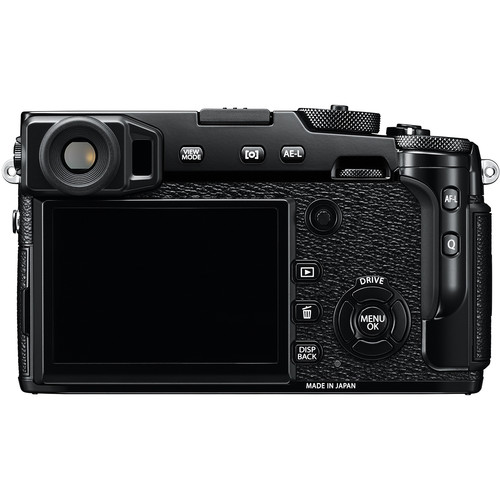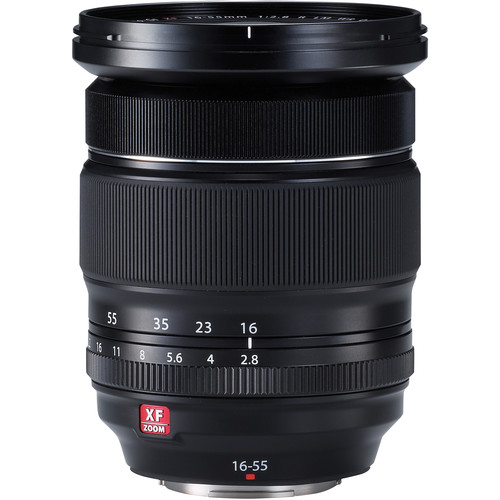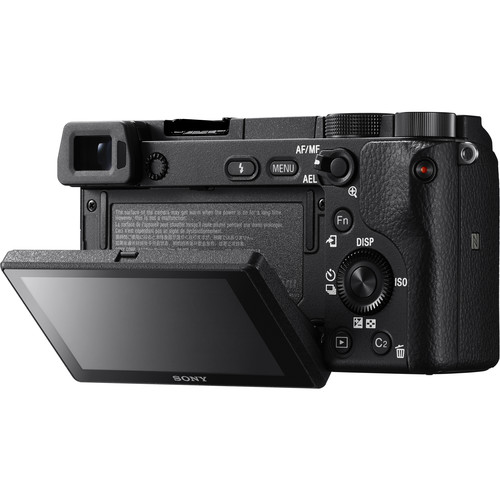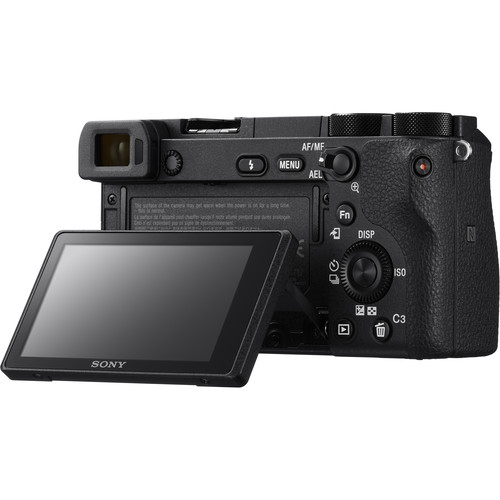
Sony Alpha a6500 Mirrorless Digital Camera (Body Only)
If you haven't already, please check out part one in the article titled REVIEW: Sony a6500 & 24-70 f/2.8 GM (Part I of II) as this review picks up where that left off.
Random Camera Body Thoughts
This camera features the same articulating display as the a6300 that is better than nothing but doesn't allow for selfie shots (a good thing?) and often doesn't do what you want when you find yourself wanting an adjustable LCD.
What I did often do was accidentally change the focus point when I brought my eye up to the viewfinder as my house would bump the screen and move the focus point. This irritated me quite bit, but I got used to it.
The annoying Sony menus are just as bad as ever, despite some minor changes that some suggest are improvements but for me it's much of the same.
The excellent eye tracking AF still requires you to set the camera to continuous autofocus and press a button to engage it, but it still works very well as did its predecessor. In this shot I gave it a spontaneous test and it successfully found his eye and not those of the distractions in the background:

f/4 @ 25mm for 1/250 sec at ISO 4000
Eye AF still works great
Unfortunately this image was softer than expected which was due to the performance of my test lens and being at f/4 with it. Given a sharper lens, this should would have only been better as the eye AF worked brilliantly.
All the rage about this camera body has been about its improved burst mode performance, but I'm a Canon 1DX Mark II owner so if I care about burst mode I go grab that camera. As a result, I didn't do much burst mode shooting. I did confirm that it can quickly bang out 110 frames before the buffer fills, but it takes quite some time for it to flush that buffer even using a fast SanDisk 64GB Extreme PRO SDXC UHS-I Memory Card. I also had mixed results with the accuracy, but given then fully frame (FE) lens (vs a cropped E-mount) I was using I decided not to explore this feature in depth.

f/5 @ 35mm for 1/60 sec at ISO 200
Even shooting on a snowy day for a couple hours, the battery performed very well
Finally, battery life was excellent in my testing (even in the cold) and Sony's excellent focus peaking worked extremely well as usual but I still wish they'd offer more color choices.
Bookshelf Test
For my bookshelf shots I always clean the lens, reset the camera to factory default, turn off stabilization (Steady Shot), use a single small AF point focused around the world tolkien on the red book, set the camera level on a tripod and then use the timer on aperture priority to get a clean shot. I've done this hundreds of times, but this time I was shocked at the results.
If you missed the first part of this review, the lens being tested with this camera is the Sony FE 24-70mm f/2.8 GM Lens.
The worst lens I've tested in years? Huh?!!!!!

f/2.8 @ 24mm for 25 sec at ISO 100 - 1st attempt
See here for the 2nd attempt shot
Thinking I must have obviously done something wrong, I repeated the entire process again and even used a new cleaning cloth on the lens - again the same results. The reason for my concern was extreme softness when wide open as shown here:
Cheap kit lens results were not what I expected from a $2000+ USD lens
To give the Sony every benefit of the doubt, I couldn't show you the JPEG's like I normally would because they were just too bad. Instead, I used the RAW files with the latest version of Lightroom and chose Camera Standard for the Camera Calibration Process 2012 Profile and I enabled Profile Lens Corrections.
I've never given a camera this much advantage in my testing, but I felt this camera needed it given what I was seeing with this lens.
I can only conclude that this could be one of three issues:
- Despite using a ziploc, perhaps condensation occurred when shooting in the snow and some inner element is smudged.
- I've got a bad lens that wasn't assembled properly or got dirty when assembled.
- This lens simply isn't as good as many people says it is when paired with this camera.
DxO test with the a6000 using this lens seem to indicate that it is much softer than when paired with the phenomenal Sony a7R Mark II, but no kidding right? Still, could it be this much worse?
Unfortunately Imaging-Resource lens test (formerly slrgear.com) didn't exist for this lens, so I have to assume #1 & #2 which is unfortunate as I won't likely have a chance to retest this lens / camera combo.
UPDATE: 24-70mm GM on the Sony A7R Mark II
As promised, I decided that the results from this lens were so bad that I wanted more verification if it was the lens or the camera. Thanks to Jeff Goldner who generously loaned me his A7R Mark II so I could do this. Please note that I didn't want to reset all of Jeff's settings so these shots have DRO Off which is why they feel darker.
After some testing tonight, I've concluded that the problem is definitely the lens - and that's sad given both its price and the hype about it. Here's the f/2.8 bookshelf shot:

f/2.8 @ 24mm for 1.6 sec at ISO 100
It's not the camera, it's the lens - it's just soft at f/2.8 when you view the original
When you zoom into 100% (and click below to see the true 100% image) you see that even the mighty A7R Mark II confirms this lens is just soft at f/2.8.
For fun, I included the 70mm here which shows the same bad results:

f/2.8 @ 70mm for 2.5 sec at ISO 100
Things don't get much better at 70mm either
So I have to say that I'm very unimpressed with this lens, so unless I have a really bad copy I wouldn't sink $2000 USD into this lens.
it should be noted that this lens, like all lenses does get much better at a couple stops past wide open so f/5.6 looks pretty good. See later in this article for those results and click here to see the full gallery of bookshelf shots with the Sony A7R Mark II with the 24-70mm GM lens.
For reference, to see what the Sony A7R Mark II is capable of, check out the results possible with the 90mm G Master lens - http://photos.ronmartblog.com/lens/sony/90mm.
Moiré pattern issue
The moiré pattern issue I highlighted in part II of my a6000 review was present in a big way which was very disappointing given the fact that there wasn't incredible sharpness that typically comes with other cameras that have this issue (most frequently due to the lack of a low pass filter),
It should be noted that the Sony A7R Mark II does not show this problem (but the Mark I did slightly on occasion).
f/5.6 & f/8 didn't suck as much (of course)

f/5.6 @ 24mm for 10 sec at ISO 100
Better, but I still prefer the 16-24mm Zeiss results

f/8 @ 24mm for 20 sec at ISO 100
Also better and about the same as above

Sony a7R Mark II f/5.6 @ 24mm for 8 sec at ISO 100
While there is more distortion, the image quality is good - not stellar - but good
Comparing at 100% with the a6300
Maybe my eyes are just used to looking at the Canon 1DX Mark II with the Sigma 85mm Art series lens, but I expected more out of this lens at this price point:
f/8 @ 24mm for 20 sec at ISO 100
In fact, if I look at 16-24mm Sony Zeiss lens I tested with here you can see that it's much better:
Sony a6300 f/8 @ 70mm for 20 sec at ISO 100
using the Sony Vario-Tessar T* E 16-70mm f/4 ZA OSS Lens
This is a heavy weight this lens that comes it in at 81 grams heavier than the Canon 24-70mm f/2.8L II and just 14 grams lighter than the Nikon 24-70 f/2.8G ED). When you couple this with its huge 82mm filter size and 5.35" 136mm) length that exceeds the Canon & Nikon, it definitely seems like the Zeiss 16-70mm might be the better way to go!
Oh and if you are wondering what this lens is like at 70mm or higher ISO's, then be sure to check out the full gallery of images at http://photos.ronmartblog.com/sony/a6500.
ISO Testing
While you can view a lot more bookshelf shots here, here's a quick look at the noise found at ISO 6400:
ISO 6400 from RAW processed in Lightroom (no noise reduction)
(Camera Standard and Lens Correction)
Click the image for a full size version of the thumbnail
(or click here for the full size image)
The RAW processed 6400 ISO version, even in Lightroom, looks a lot better than expected. However, the standard in-camera default noise reduction destroys the image as shown below:
Screen capture of in-camera JPEG for the raw file above
Default noise reduction destroys details pretty bad!
UPDATE: Sony FE 90mm f/2.8 Macro G OSS Lens
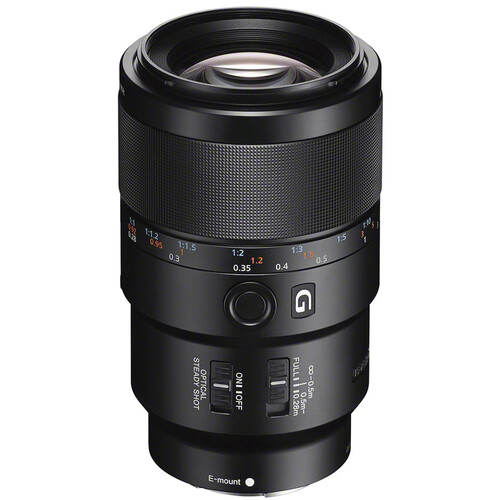
Sony FE 90mm f/2.8 Macro G OSS Lens
Good news boys and girls, thanks to my friend Jeff Goldner, I was able to test the a6500 with a proper lens - the Sony FE 90mm f/2.8 Macro G OSS. This lens shows what this camera is really capable of, and it was a lot more than the lame 24-70mm GM was showing us.
While it naturally doesn't have the dynamic range and detail of the flagship A7R Mark II (90mm tests shots here), the results are very sharp and detailed:
Click for the full in-camera JPEG original of this image
I also upload more in the gallery here, but this validates my original concerns. I'm glad about that because this is a camera that I've loved, even if the need for it is reaching its end of life given all the great choices on the market these days.
More Real World Shots
See the first part of this article for a bunch of real world shots and more info about my methodology, but here's a few more:

f/4 @ 42mm for 1/200 sec at ISO 100
Standard Creative Style does a good job, but...

f/4 @ 42mm for 1/250 sec at ISO 100
Landscape Creative Style is still my favorite - I love the color I get with it!

f/9 @ 42mm for 1/80 sec at ISO 200
Assuming I had a good lens, I wanted to do some depth of field tests at f/9,
but in retrospect the only value of this shot was the detail on the close snow covered leaf

f/3.2 @ 42mm for 1/200 sec at ISO 100
When I compare the subject sharpness at both open and closed down apertures, the results favored f/9 over f/3.2 for detail in the foreground subject
Conclusion
Sadly, it turned out to be one of the worst camera/lens combos I've tested and really the first Sony camera and lens combo to let me down in quite some time. In fact, It made me wished I had chosen a different E Mount lens as this combo had me doing a lot of duplicate testing in the hope that I could pinpoint the problems to something I could fix instead of this camera I wanted to love.
Since I loved the a6000 and a6300 using the the Sony Vario-Tessar T* E 16-70mm f/4 ZA OSS Lens, I'm going to give Sony the benefit of the doubt and suggest that users go with that combo over the more expensive Sony FE 24-70mm f/2.8 GM Lens tested here. I suspect/hope that would give results closer to that I'm used to seeing from Sony these days.
UPDATE: The results with the 90mm G Master prove my point above, so when paired with a good lens this camera is still a decent camera. That said, the remainder of my conclusion still remains mostly unchanged...
I do find the $1398 USD price tag of this camera (at the time this was written) to be quite expensive for what you get - especially since I'm not seeing huge improvements over the a6000 (currently $548 USD) and a6300 (currently $998 USD).
Unless you need the video or burst mode improvements, I'd suggest going with one of the previous aX00 models over the a6500. I'd also prefer an easier to grip and full-frame sensor of a a7 II (see my a7 review) over a cropped sensor at this price point, so it also seems a better choice if the incredible a7R II is out of your reach.
My once most heavily recommended camera has moved to my look elsewhere list. It's not that it's a bad camera (when paired with a great lens), it's just that it's moved into the full DSLR price range. The 7D Mark II and excellent Nikon D610 offer much more in terms of dynamic range and platform benefits with the range of lenses and flash accessories without a huge penalty in weight / size, so I think the need for this camera has faded away.
Where to Buy?
CLICK HERE to learn more or buy today.
Other articles you may enjoy
If you enjoyed this article, you may also enjoy these:
- Sony a6500 & 24-70 f/2.8 GM (Part I of II)
- Sony a3000
- Sony a6000 (includes 16-70mm lens)
- Sony a6300 - 4k video
- Sony a7 (includes Samyang lens)
- Sony a7R Mark II with 24-70mm
- Sony DSC-RX1 (Full Frame Compact Camera)
- Sony DSC-RX10
- Sony RX100 IV (Sony RX100 III)
- Sony NEX-7
- SIGMA 85mm f/1.4 Art Series - the best art series I've tested
- Ron's Recommendations
Disclosure
If you make a purchase using links found in this article, I may make a commission. It doesn’t cost you a penny more, but it does help to support future articles like this.




![image[5] image[5]](https://blogger.googleusercontent.com/img/b/R29vZ2xl/AVvXsEhyc3xNzRdCV0JFIA-r3pK70c8xhkXW-BHaAZiLbNsrpqZh8Hk_k2F9XLL8O5NOjKDgwvFQstL4DzkMXTEZzQPqq2-1yNy4xsiaS6cBwErObvzT_gKxiMFzsarUsWDql8EZfA_mP47_t7ig/?imgmax=800)





